Southern University at 5116 Magazine Street, New Orleans (circa 1885)
Many people are not aware that Southern University was originally located in New Orleans. Now located in Scotlandville, Southern was chartered in 1880 as a state-supported institution for the education of black students. During Reconstruction, three private institutions were established for people of color: Straight University (1869-Congregational), Leland University (1870-Baptist), and New Orleans University (1873-Methodist).
Since all three were located in New Orleans, many white people saw no need for another black institution but with an illiteracy rate of over 40 percent, African American political leaders in Louisiana saw it as a necessity. It was through the efforts of black Reconstruction activists – former Governor P.B.S. Pinchback, State Senator Théophile Allain, and State Senator Henry Demas that Southern University came into existence. Their determination brought about action in the 1879 State Constitutional Convention to which they were delegates.
Chemistry Laboratory (1890)
They envisioned the curriculum to be one with an advanced literary and scientific program. From its inception, they fought to make Southern in New Orleans unique from other state-supported black institutions of the late 19th century. Others had placed a total concentration on vocational education, but Southern would offer advanced literary and scientific training. The areas of study would be a school of Mathematics, Ancient & Modern Language, and Natural Science. Another reason for the advanced curriculum was due to its student body. Children of many prominent families would attend. Bismark Pinchback (son of the co-founder), as well as the children of the Allain, Geddes, Isabelle and Dejoie families enrolled.
Southern opened its doors on Calliope Street near St. Charles Avenue in January 1881. The school consisted of twelve students, five faculty members, and an annual budget of $10,000 for maintenance. The first courses offered were at the pre-collegiate level: grammar, high (preparatory) and normal school. Slowly, college instruction was added as well.
Mary Ann Craig DeLong (1865-1960) – First student to enter Southern University
Candidates entering the preparatory department were required to take courses in: English, Grammar, Orthography, Arithmetic, Algebra, Geometry, Physical Geography, Modern & Ancient History, and Ancient & Modern Languages. For those who did not intend to follow the path to college, there was a course of bookkeeping, accounting, and penmanship.
After operating on Calliope Street for six years, the school in 1887 moved to 5116 Magazine Street at the corner of Soniat. The laying of the cornerstone had taken place just a year prior in May 1886.
From 1880-1900, the sentiment of leading business-philanthropists and Southern reformers stressed the need for Negroes to become industrially trained. As a result, the emphasis at the new university began to shift. With the passage of the Morrill Act of 1890, Southern University soon became a land-grant institution and greatly expanded its Agricultural and Mechanical Department. Southern’s first mechanical class consisted of a total of twenty-seven students and forty-two students in its agricultural department.
Students in the Mechanical Department attended classes for three years, preferably entering at the age of fourteen. It included such trades as carpentry, mill-wrighting, joinery, cabinet making, trimming, scroll work, and tin-smithing.
The Experimental Farm at Harahan, Louisiana
From the beginning, the Agricultural Department was popular among rural students, but not those from the city. The department was in desperate need of a suitable farm area to rent or purchase. A site was finally obtained in the spring of 1891, about four miles outside New Orleans on the Mississippi River, near Harahan. It was located on 100 acres of land in a truck farming community. Since it was easily accessible by the railroad and Mississippi River Bridge, students could be transferred to the Magazine Street site for their literary studies. Crops grown on the farm by students were: sugar cane, cotton, tobacco, corn, oats, potatoes, cabbage, onions and melons. Students built their own two-story dormitory and the other buildings consisted of barns, school rooms, three cabins, chicken-house, a tool and shed, plus a blacksmith shop.
By 1910, people living in more rural areas of the state desired to have a higher educational institution in closer proximity to where they lived. They needed a state normal school for the training of teachers to be located nearer to the center of the state. They also felt that their agricultural needs were not being met in New Orleans since the farm was a distance from the Magazine Street school and since “city Negroes” felt little desire for agricultural training.
As a result, Governor Jared Sanders in 1910 recommended to the legislature that Southern University be removed from New Orleans. He felt that the crowded city was handicapping the school but also that it was located in “too good” of a section of the city. In other words, its location was too close to Tulane University and in the heart of the uptown white population.
President William McKinley’s Reception-May 2, 1901, Southern University
Amid all the turmoil, the school continued to progress. President William McKinley and Booker T. Washington were just two of many distinguished visitors to its campus. At the height of its growth, Southern University closed its doors in New Orleans at the end of that school term in June 1913. It had been housed in New Orleans for thirty years.
With the proceeds of the sale of its New Orleans campus, Southern was able to purchase a new site, five miles north of Baton Rouge. On March 9, 1914, Southern University reopened on a scenic bluff in Scotlandville, Louisiana.
Mother Katharine Drexel, foundress of the Sisters of the Blessed Sacrament for Colored and Indian Missions, purchased the 5116 Magazine site for $18,000 on April 13, 1915. The “Old Southern” site would now give birth to Xavier University Preparatory (better known over the past 100 years as “The Prep”) and eventually to Xavier University itself.
Sources: Southern University’s Agricultural & Mechanical Departments: Descriptive Analysis of the New Orleans Years, 1880-1913, Charles Vincent [article from 12/1992 vol.9, issue 1 of Agriculture and Human Values (on-line); Crescent City Schools (Public Education in New Orleans 1841-1991); Donald Devore & Joseph Logsdon (1991) pages 189-191; The Negro in Louisiana, Aspects of His History &Literature, Charles Rousseve (1932); Photos from: HBCU Library Alliance Digital Collection (Southern University A&M College); Xavier University of LA (Archives Department).
Lolita Villavasso Cherrie
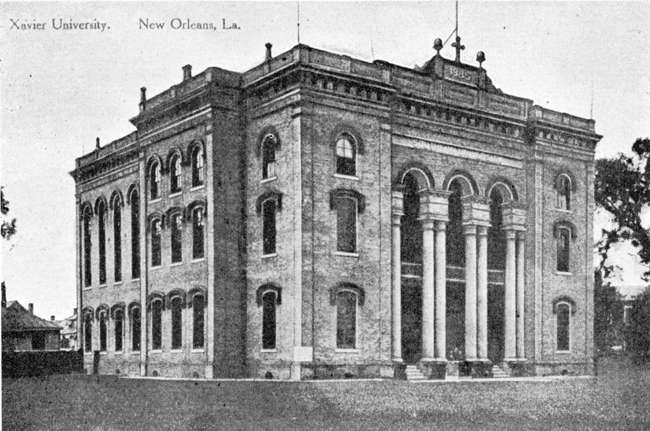
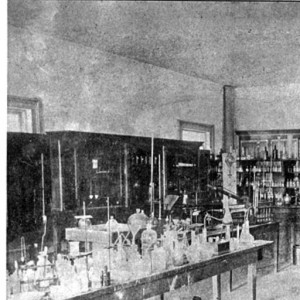
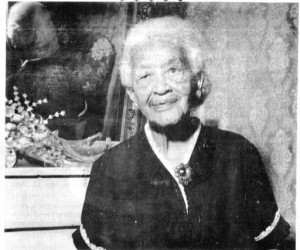
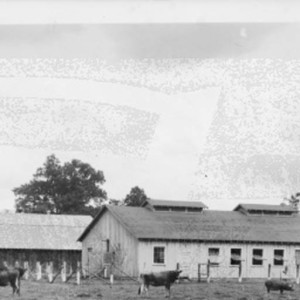
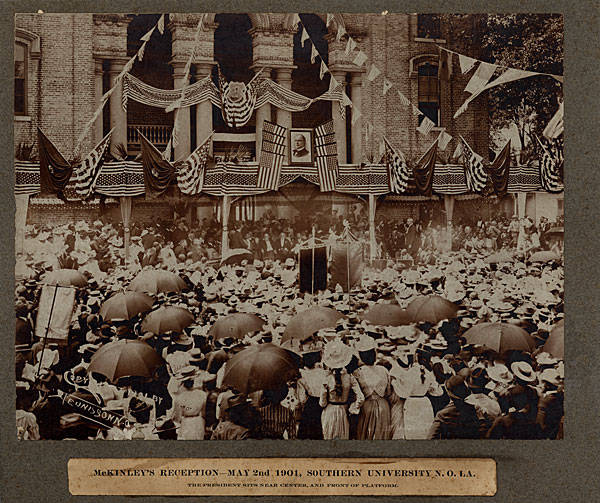



This is great. I would like to see more about Straight. Do you have list of students
Thanks for publishing these, Lolita, and for all your tireless work in getting the stories of our people told . I’ll try to call when I get to NOLa in April
Would love to learn more. History lesson
Wow!
History I wish I knew 50 years ago.
Superior as always . How many of us knew of this when we were students of Xavier Prep? Thank God for visionaries, especially you.
It seems strange that such a commanding building would be removed for the present structures . Had there been any fires etc. that may have required the removal as I’m sure that structure would have been accomodating as a school. Seems to have been a very impressive structure .
Hi Dwayne, The Southern/ Xavier site at 5116 Magazine Street was constructed in 1886 and demolished in 1952 to 1954. I am not aware of any major fires, only the Great Storm of 1915 which caused heavy damages but did not destroy the entire structure. From my research I know that as the years went on it was costing more and more to repair the buildings and since one section of the original building was even condemned, the decision was made to build the present site because of the expense of maintaining the old one. I agree, it was a beautiful, impressive building.
My great uncle, Louis A. Martinet, I read was in the first graduating class from the Straight University Law School. There is a Louis A. Martinet Legal Society that operates in NO and Southern LA to this day.
I was fortunate to attend school at that site, Xavier Prep. I loved being a “prepper.”
Louis Labat
Class of 1960!
Hi Louis, I attended Xavier Prep from 1955 to 1959 and a three time graduate from SU. I just learned about ten years ago that 5116 Magazine was the New Orleans location for Southern.
This is about the most interesting read I’ve come across on Southern University. Thanks for the information. GEAUX JAGS.
I am a Dillard grad (1963) but fascinated by this history.
Are there any other photos of the building at 5116 Magazine ?
This is Black History I never knew about. I would love to read more.
I am truly blessed to know of the birth of a University I Love very much. I love Martin Luther King and Rosa Parks. I know a lot about them, but doing Black History Week I will make sure this wonderful information about Southern University is shared as well.
Another Great article, Lolita!
Are there any surviving pictures of staff from the 1800s? I would love to see a picture of Leonora Virginia Miller Martinet. Did she remain with Southern University when it moved?